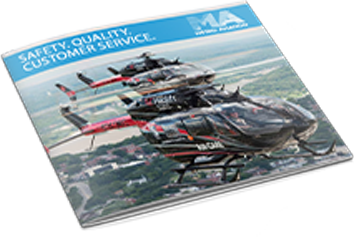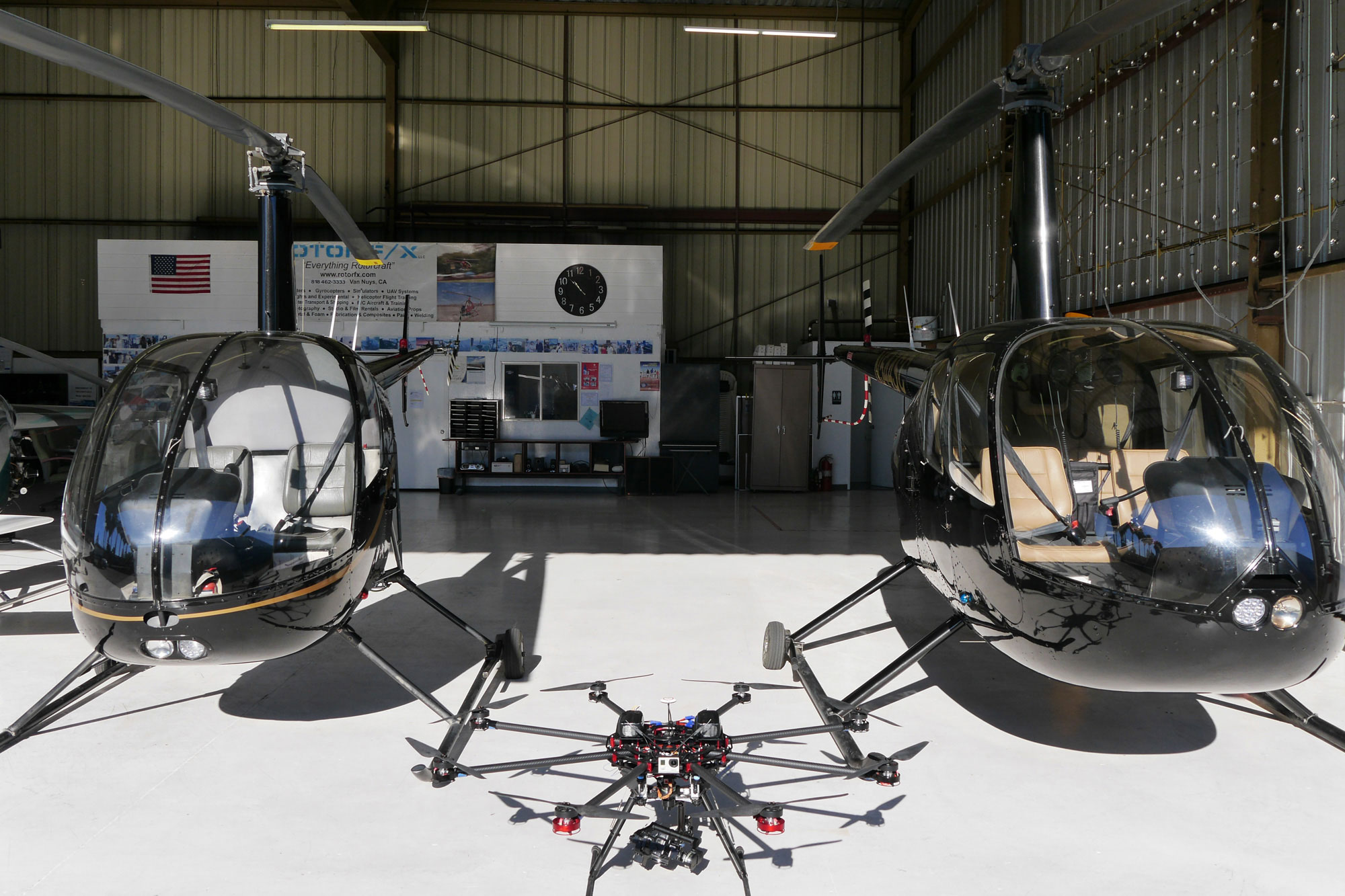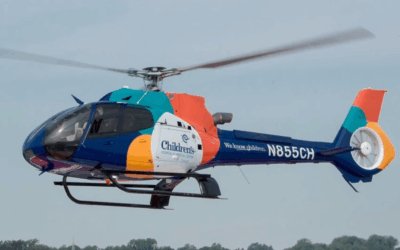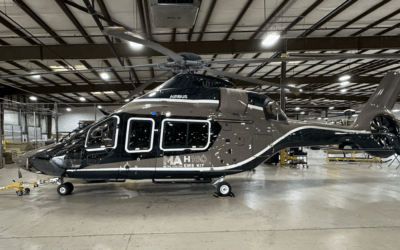February 27, 2015
On July 11 last year, a Metro Aviation Airbus Helicopters EC135 was cruising at about 2,800 feet near Baton Rouge, La., when the pilot noticed flashing lights on the horizon. The lights appeared to belong to an aircraft, so the pilot watched them to maintain visual separation. “Although I was flight following with New Orleans approach, they had not given me any traffic advisories of other aircraft in the area,” the pilot reported. The approach controller was not obligated to give such advisories since the helicopter was VFR in Class E airspace.
About two seconds after seeing the lights, the pilot reported, “I realized it was approaching extremely fast so I performed a quick 2g pull-up and watched the UAV [unmanned aerial vehicle] pass less than 100 feet directly below me.”
The UAV wasn’t one of the small recreational machines that are becoming commonplace, said Tarek Loutfy, director of safety for Metro Aviation. It was five feet in diameter with propellers facing down on each corner. The pilot notified ATC of the near-collision, and the incident was reported to the Office of Accident Investigation. TheFAA investigated the incident but never found the operator of the UAV, Loutfy said.
CALL FOR REPORTS
These encounters have become a significant concern for Metro Aviation and its pilots. Milton Geltz, managing director of the Shreveport, La.-based air medical services provider, said his pilots are recording on average oneUAV encounter per month. Sightings have become so prevalent that the company added a UAV category to its Aviation Safety Reporting for future analysis. The issue is of sufficient concern to the company that Geltz brought it to the attention of FAA officials during a government-industry forum sponsored earlier this year by the Helicopter Association International (HAI), Air Medical Operators Association (AMOA) and Association of Air Medical Services (AAMS).
Geltz noted that his company, which fields a fleet of more than 100 helicopters, is not the largest of operators and wondered how frequently other fleet helicopters are encountering UAVs.
AMOA president Christopher Eastlee said he is receiving frequent enough reports of cases requiring evasive action that the association is working with HAI to develop a reporting system. No clear metrics exist about how frequently this happens, Eastlee said. “We can’t quantify it. We are trying to get a handle on this.” The FAA has encouraged operators to report encounters to ATC. But for helicopters, many operations occur outside controlled airspace and at the much lower altitudes where recreational UAVs or model aircraft are typically found.
The FAA says it has received reports of an average of 25 unmanned aircraft or model sightings a month. “While many of these sightings are from general aviation or helicopter pilots, airline crews have also reported them,” the agency said in a statement. “The reports range from unmanned aircraft sightings without impact to other pilots and aircraft to, on a few occasions, pilots altering course to avoid an unmanned aircraft.”
Many of these UAVs are camera-equipped, and some are operated by onlookers who want to see the scene of an accident, where a medevac or police helicopter might be operating.
The FAA recently released the long-awaited proposed regulations regulating small UAVs used for commercial or non-recreational purposes. The proposal would require that small UAVs remain below 500 feet agl in daytime visual conditions, and with the operator maintaining a line of sight.
This proposal was welcomed by aviation groups eager to see the safe integration of unmanned systems. “TheFAA has taken a good first step in releasing these initial guidelines to provide a much-needed regulatory structure for these operations,” said Bob Lamond, NBAA’s director of air traffic services and infrastructure.
MODEL AIRCRAFT HAZARDS
Bill Crozier, assistant manager for the FAA’s UAS Integration Office, said the regulated UAVs do not present as much of a concern as hobby drones since typically they are known, traceable and adhere to rules. But the hobbyists are a different story, Crozier said. “Model aircraft are one of the biggest challenges we have,” he said, noting they are flown by remote control and may not always be in the line of vision as they are required to be. He noted a “growing number of reports of model aircraft flying where they should not be.”
The FAA has had some success in enforcement cases where it has determined that the UAV or model aircraft was flown with reckless disregard for public safety. One high-profile case involved Raphael Pirker, who in January reached a settlement on a civil penalty with the FAA. Pirker originally fought the FAA’s proposed civil penalty, but the NTSB ultimately upheld the FAA’s authority to pursue enforcement.
Law enforcement has cooperated with the FAA on UAVs, building on a relationship formed when the agency needed assistance with the malicious use of lasers against aircraft, Crozier said. But he believes that education is the better path forward. “If we educate users, we won’t need to use enforcement,” Crozier said.
The FAA has partnered with various industry associations on a “Know Before You Fly” campaign to educate the public on proper use of UAVs. The agency calls for recreational users not in contact with ATC to fly no closer than five miles to airports. HAI president and CEO Matt Zuccaro said he would like to see that requirement expanded to create a safety zone around helipads, as well.
Loutfy asserts current guidance and requirements are not enough, given the rapidly evolving technology, the fact that the machines are growing larger and the growth of recreational use. “I don’t know how the government gets its hand around it,” he said. “The threats of UAVs to aviation safety are real and continue to pose a concern to safe operations.” The low altitudes are where some helicopter pilots fly most of their operations, Eastlee added, and these are the altitudes where most UAVs are found.
But even regulated drones can be problematic, said Pete Bunce, president and CEO of the General Aviation Manufacturers Association. “Are we concerned? Yes we are,” Bunce said during GAMA’s recent State of the Industry press conference. “We see them get lost. We see them go astray.” With recreational users, he added, there are no regulations ensuring the operator is competent to fly the aircraft. Bunce noted that although aircraft undergo testing for bird strikes, no such tests involve UAVs or model aircraft, which are made of metal and hard plastics.
In addition to establishing a reporting system for pilots, Eastlee said AMOA and other associations, including HAI, are working to develop guidance for pilots. He noted that most of the information available is geared toward actions for the UAV operator. Little guidance has been disseminated for the airplane or helicopter pilot who might encounter a UAV.
Both Eastlee and Zuccaro said that safe integration is key because rotorcraft operators may become some of the biggest users of UAVs.
Stay Updated with Metro
Metro Aviation Announces New OCC Manager
metro announces new OCC manager NOVEMBER 18, 2025 Metro Aviation is proud to announce that Anthony Fountain has been promoted to Operational Control Center Manager. Anthony joined Metro just over three years ago as an Operational Control Center Specialist, and from...
Metro Aviation to Expand in 2026 with the Addition of Three New Operations Customers
metro TO EXPAND IN 2026 WITH THE ADDITION OF THREE NEW OPERATIONS CUSTOMERS OCTOBER 28, 2025 Metro Aviation, a recognized leader in air medical transport operations and aircraft completions, proudly welcomes three new partners to its operations family: Vanderbilt...
Metro Aviation Advances Air Medical Capabilities with H160 EMS Interior STC and H140 Fleet Expansion
metro announces h160 ems stc and h140 fleet expansion OCTOBER 27, 2025 Metro Aviation, a recognized leader in air-medical transport solutions and aircraft completions, is proud to announce two significant developments that strengthen its support for critical-care...
Download Brochure
Metro Aviation is constantly growing our capabilities and expanding our reach. Metro holds more than 30 Supplemental type Certificates (STC) and completes about 35 aircraft each year for U.S. customers and global clients.





